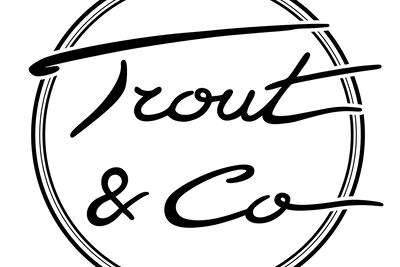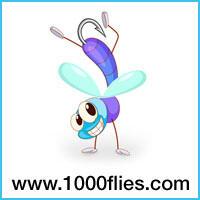The Contact II series of the American brand Thomas & Thomas is the latest evolution of the Contact series. It is intended for modern nymphing approaches. In this review, we are looking deeper into the 2 most specific models: the most powerful 10’9 #4 and the longest 11’2 #3.
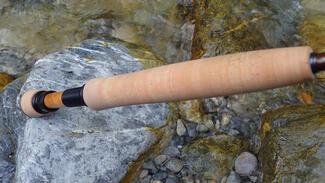
STATIC TEST
On the aesthetical side, this new Contact II series is close to the original Contact: it notably takes up the dark gray spiral coating of the blank and the brown olive wraps. The rod number is still present at the different separation points to help alignment of the pieces. It also features high-end components from the Contact series, including a maximum quality cork handle (extra flor), and a titanium-frame ceramic stripping guide followed by 11 single foot RECoil guides. Finally, the handle ends with a new thin fighting butt, more discreet than the previous one, bringing comfort and balance. The black anodised aluminium reel seat keeps its ash burl insert but becomes down-locking. The Thomas & Thomas Contact II are 4-piece rods shipped with a made in USA protective cover and an aluminium tube.
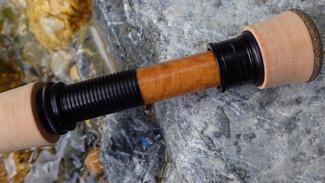
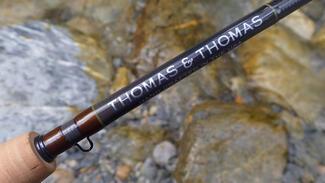
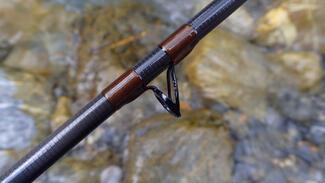
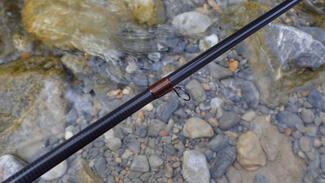
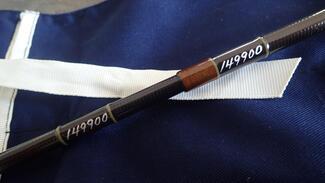
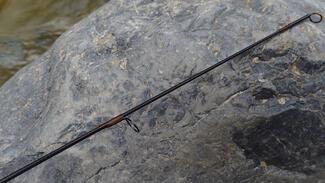
Measures
Power
34 cents has been needed to bend the 10’9 #4 over a third of its length. It means that the power of this rod is equal to an ERN of 4.01. Regarding the 11’2 #3, 28 cents was needed to bend it over a third of its length, which gives an ERN of 3.12. On those two rods, the announced power (respectively 4 and 3) is then slightly overestimated. According to the Common Cents System, the real power of those rods is #3/4 for the 10’9 and #2/3 for the 11’2.
Action
The action of a rod is characterised by the Action Angle (AA). The Contact II 10’9 #4 is fast because its action angle is wider than 66°. The Contact II 11’2 #3 is moderate fast. Its AA is between 63 and 66°.
Reactivity
The reactivity is defined by the frequency of oscillation in CPM. It is an indicator of the dry fly-fishing capacity. The reactivity is generally inversely proportional to the rod length and proportional to its power.
Without surprise, the reactivity of the 10’9 is higher than on the 11’2 (respectively 73 cpm and 71 cpm). It means that the 10'9 can easily cast a dry fly with a line of 3 or 4 according to the distance and conditions (weather, wind, trout’s degree of distrust).
Manufacturing
When it comes to the manufacturing criteria, the first parameter to consider is the distance between the handle and the stripper guide. Indeed, when you are nymphing with the rod high, the line is likely to form a slack if the stripper guide is too far from the handle. For good nymphing perspectives and avoid this phenomenon, a distance of less than 16 in (40 cm) is generally recommended.
The rods of the Contact II series have been made with a distance of 14 in (35 cm) between the handle and the first guide. It makes them perfect for modern nymphing approaches. The guide is neither too close nor too far from the handle. When it is too close, it really decreases the pleasure of dry-fly fishing. Thomas & Thomas really found the best compromise here.
As usual, the American brand used a standard thickness (0.94") and relatively short (6.42") handle. It allows to not waste any useful length and fish efficiently with a semi-auto reel. These reels are very popular amongst the nymphing community here in Europe. With the handle of the Contact II series, it is easy to keep the ring finger of the hand that is holding the rod on the trigger.
On the fishing side, they are both a hook keeper and alignment marks for the first pieces thanks to the serial number.
Comfort
While fishing, those two rods are really comfortable thanks to their very light weight. The 10’9 weights 3.24 oz (92 g) and 3.28 oz (93 gr) for the 11’2. The down-locking reel seat increases the balance. You will then not be surprised to learn than the 10’9 balances perfectly with an empty reel of about 4.6 or 4.9 oz (130 or 140 g). You’ll need a reel of 5.3 or 5.6 oz (150 or 160 g) to find the perfect balance with the 11’2.
To compare, the Total Balanced Weight for the Contact II 10’9 is 15 g lighter than the Maxia SX4 10’8 #3 (same length but the Thomas & Thomas is more powerful).
Thomas & Thomas Contact II 10'9 #4
Thomas & Thomas Contact II 11'2 #3
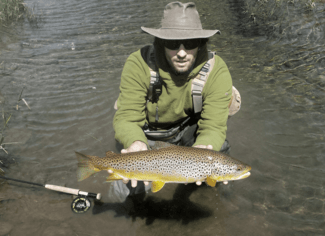
The opinion of Joe Goodspeed, Thomas & Thomas rod designer
" Contact II 10’9”4wt is a versatile rod with a number of uses. The rod is primarily designed to perform euro nymphing tactics with larger average size nymphs and anchor flies size #4-#14 and with 4x or 5x size tippets. This rod is a great choice for fisheries where the flows or size of the fish necessitate more rod power and backbone, or for anglers who want to use european nymphing techniques with jig style streamers. The 10’9” 4wt has the tip and tip mid power to generate an effective hookset with anchor flies and jig streamers as large as size #2, while maintaining the smooth loading, fast-recovery action found in smaller line weight Contact II rod models. In addition to the euro style uses, this rod will cast effectively with a standard WF4F fly line – ideal for crossing over to surface fishing, or for roll casting and mending floating indicators.
Contact II 11’2” 3wt is our longest model in the Contact II family, designed to maximize an angler’s range for making precise drifts with small and medium size nymphs. This model performs best on technical fisheries where keeping a little more distance from the fish, and having better control of the line angle while drifting nymphs can be the difference between success and failure. The Contact II 11’2” 3wt fishes best with flies size 10-22 and 5x – 8x size tippet, and has the rod strength to land the large trout that often live in those tailwaters and spring creeks where this rod is most useful. "
The Editor’s opinion
Regarding to the CCS measures, those rods are made for different uses.
- With its real power at #3/4 and a fast action, the 10’9 presents itself as THE nymphing rod aiming for large trout. Its length makes it versatile and allows you to fish all types of water. Another strong advantage of this model is lies in its excellent dry-fly fishing capacities. It is an absolute delight to cast a dry fly with the Contact II 10’9 #4. We particularly appreciated it on medium distances with a Scientific Angler VPT line #3. It does not stop here. This rod is particularly suitable for tandem dry and nymph and to alternate between pure nymphing and dry only. Regardless of the power difference between those 2 models, the 10’9 #4 is fast than its little sister the #3.
- As you would have guessed, the 11’2 is a pure nymphing rod, made for large rivers and streams. It is suitable for all fish sizes, but has a predilection for the size described by Joe Goodspeed. This length and the moderate fast action are a great combination. It gives a very progressive and harmonious curve which allows, if required, to use a very fine line and a light bead, to limit the risk of losing the fish. It would be for example a very interesting rod for the fine grayling fishing in large rivers. Its length will be an advantage to ensure a perfect control over the long drifts from a distance.
Obviously, these rods share the finishing touches qualities of high-end components, hallmark of the famous American brand !

